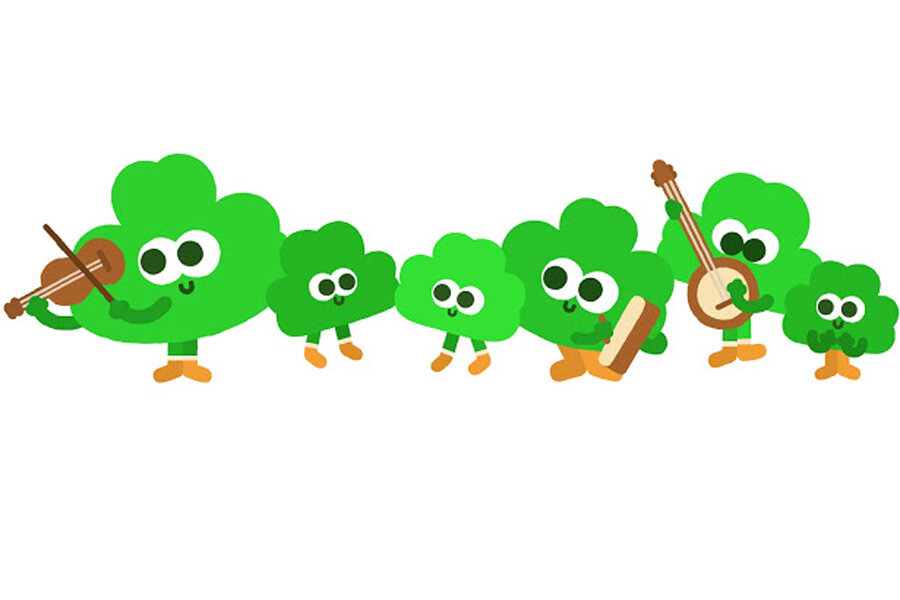Google's St. Patrick's Day Doodle deserves a good slagging
Loading...
As the most exotic and mysterious people on Earth, the Irish can sometimes be difficult to understand. This FAQ will help you decode the bizarre and often perplexing symbology of Tuesday's animated St. Patrick's Day Google Doodle.
What are those green things? Where'd the Google logo go?
Each letter in "Google" has been replaced by a shamrock, a kind of young, three-leaf clover. The shamrock has been an enduring symbol of Ireland since, according to legend, Saint Patrick used it to explain the concept of the Trinity.
What can I do to undermine Saint Patrick's metaphor?
Call it a four-leaf clover.
What's that first clover doing – the big fella?
The big shamrock is playing what is alternatively known as a violin or a fiddle.
What's the difference?
It depends on whether you are buying or selling.
What about the next two shamrocks? What kind of dance step are they doing?
Here's a neat trick: If you can say the words "edible elephant," in time with the beat, then it's a double jig. If you can say "humpty dumpty" with the beat, it's a single jig. If you say "animated alligator" along with the beat, its a reel.
But in this case, it's none of those. They're just hopping up and down. They could be dancing to the Ramones for all we know.
What's the next one doing? It looks like he's banging on something.
He's playing a bodhrán. Pronounced like "BAU-ron," it's essentially a big tambourine without the cymbals, and is played with a stick called a tipper or beater. In the 20th century, the bodhrán largely replaced the tambourine in Irish folk music.
Among session musicians, the bodhrán player is traditionally the most frequent target of slagging.
What's slagging?
It's how Irish people express affection to one another. To outsiders, it looks like unrelenting verbal abuse. For example...
What do you call a groupie who hangs around Irish musicians?
A bodhrán player.
How can you tell if a bodhrán player is at your door?
The knocking keeps getting faster.
What's the difference between a bodhrán player and a trampolinist?
Trampolinists remove their shoes.
How can you tell if the stage at an Irish festival is level?
The bodhrán player is drooling from both sides of his mouth.
Enough about the bodhrán. Why is that other shamrock playing a banjo?
While most commonly associated with American country and bluegrass, the banjo also plays a major role in traditional Irish music. First produced in the 17th century by African slaves in the Americas, the banjo was introduced to Irish music via returning emigrants. Probably the most renowned banjo player in modern Irish folk music was Barney McKenna, of the Dubliners.
What's the difference between a bodhrán player and a terrorist?
Terrorists have sympathizers.
Is a bodhrán player a musician?
Is a barnacle a ship?
Can you recommend some traditional Irish music?
Sure. Here are some YouTube clips to help you get through your day, starting with a really good bodhrán player.







